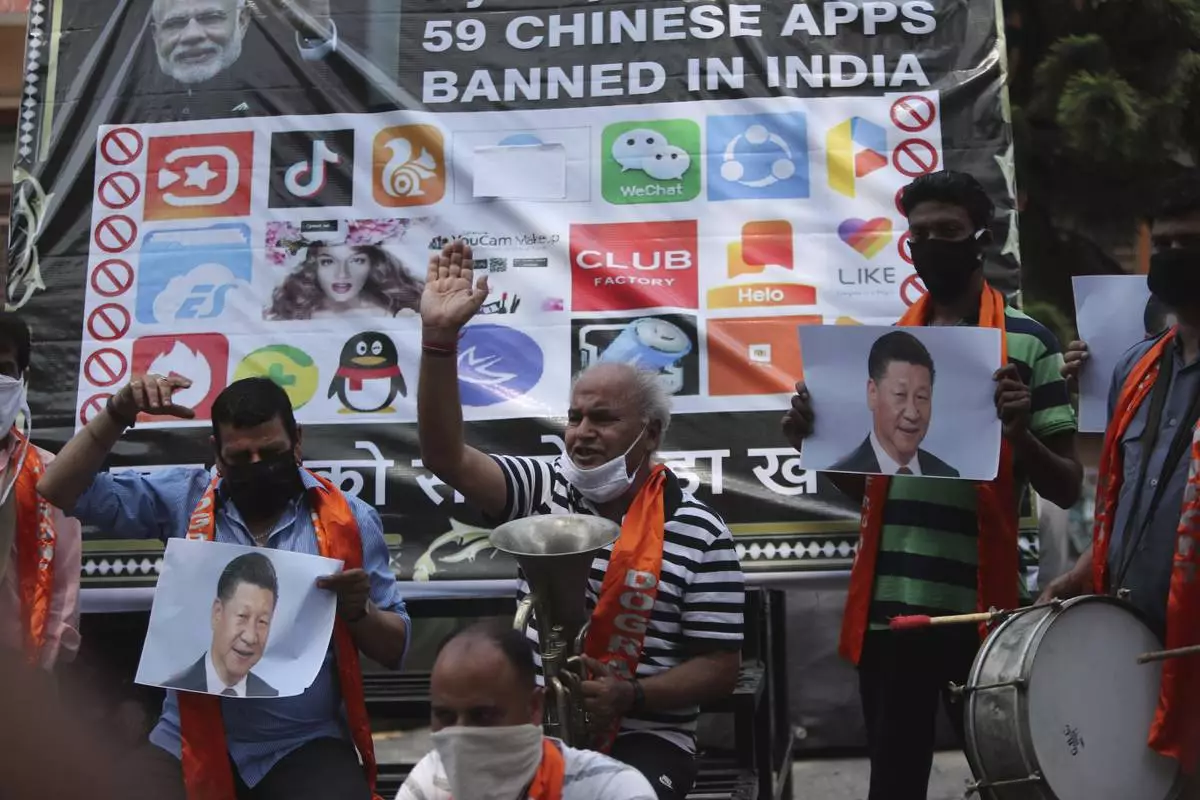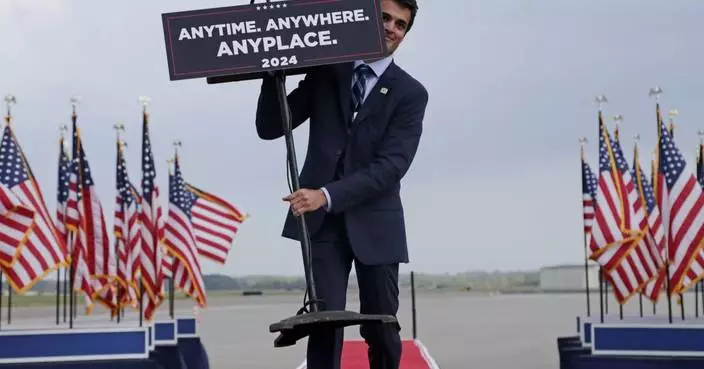The head of the Army Corps of Engineers has sent Congress a $778 million plan to fortify an Illinois waterway with noisemakers, electric cables and other devices in the hope that they will prevent Asian carp from reaching the Great Lakes, where the aggressive invaders could leave other fish with too little to eat.
Lt. Gen. Todd Semonite on Thursday approved the plan to install defenses at the Brandon Road Lock and Dam near Joliet, Illinois, about 40 miles from Lake Michigan. The site is a crucial choke point in an aquatic pathway between the lake and the carp-infested Illinois River.
The plan represents a compromise between proposals to erect barriers that would seal off Lake Michigan from the river and less drastic measures such as stepped-up commercial fishing.
Environmentalists and states including Michigan had argued for physical separation, while Illinois and Indiana contended that it would disrupt cargo shipping and that a Chicago-area electric barrier was keeping the carp at bay.
Although only a few live Asian carp have been found past the barrier, the fish's DNA has turned up there as recently as April, when water samples were taken from Chicago's Lake Calumet. The Corps says the leading edge of adult bighead and silver carp — the most feared of several Asian species because they gorge on plankton that other fish need — is about four miles from the Brandon Road complex.
"The Brandon Road project is the only shot we have to get additional protections in place to stop the carp," said Marc Smith of the National Wildlife Federation. "It will significantly reduce the risk."
The plan calls for installing a gantlet of technologies intended to repel approaching fish, including additional electric barriers and underwater speakers that would blast loud noises, plus an "air bubble curtain." A specially designed "flushing lock" would wash away carp that might be floating on the water as vessels pass through.
Semonite's endorsement came more than five years after the Army Corps offered a series of options for blocking the carp's advance.
It's now up to Congress to decide whether to authorize the project and provide most of the funding. A pending House bill recommends $3.8 million for preconstruction, engineering and design work in 2020. The expected completion date is March 2027.
"With the Asian Carp on the doorstep of our region's most vital natural resource, we have a small window of time to stop this invasive species before it inflicts irreparable damage on our Great Lakes and our $7 billion fishing industry and equally important tourism industry," said Rep. Marcy Kaptur, an Ohio Democrat who chairs the Appropriations Subcommittee on Energy and Water Development.
Republican Reps. Paul Mitchell and Bill Huizenga of Michigan also pledged support.
Bipartisan teamwork will be essential, particularly given the plan's escalating cost, said Molly Flanagan of the Alliance for the Great Lakes.
A draft released in 2017 estimated that the project would cost $275 million. The final version put the price tag at $778 million, and that would be under an "expedited" scenario in which the various technologies would be installed at the same time. It could reach $832 million under an alternative "phased" strategy, spokesman Allen Marshall said.
Another key will be getting financial support from Great Lakes states. The Army Corps generally requires non-federal partners to pay 35 percent of a project's construction costs, although Congress could waive some or all of the requirement.
Illinois Gov. J.B. Pritzker last month authorized his state's cooperation with initial phases of the program but said he wouldn't commit to long-term support without efforts to limit costs and contributions from other states.
Sens. Dick Durbin and Tammy Duckworth, both Illinois Democrats, said Friday that they would seek congressional approval "under a cost-share agreement that will ensure Illinois isn't left footing the bill for a project that will benefit the entire Great Lakes region."
Follow John Flesher on Twitter: http://twitter.com/johnflesher
NEW DELHI (AP) — The hugely popular Chinese app TikTok may be forced out of the U.S., where a measure to outlaw the video-sharing app has won congressional approval and is on its way to President Biden for his signature.
In India, the app was banned nearly four years ago. Here's what happened:
In June 2020, TikTok users in India bid goodbye to the app, which is operated by Chinese internet firm ByteDance. New Delhi had suddenly banned the popular app, alongside dozens other Chinese apps, following a military clash along the India-China border. Twenty Indian and four Chinese soldiers were killed, and ties between the two Asian giants plunged to a new low.
The government cited privacy concerns and said that Chinese apps pose a threat to India’s sovereignty and security.
The move mostly drew widespread support in India, where protesters had been calling for a boycott of Chinese goods since the deadly confrontation in the remote Karakoram mountain border region.
“There was a clamour leading up to this, and the popular narrative was how can we allow Chinese companies to do business in India when we’re in the middle of a military standoff,” said Nikhil Pahwa, a digital policy expert and founder of tech website MediaNama.
Just months before the ban, India had also restricted investment from Chinese companies, Pahwa added. “TikTok wasn’t a one-off case. Today, India has banned over 500 Chinese apps to date.”
At the time, India had about 200 million TikTok users, the most outside of China. And the company also employed thousands of Indians.
TikTok users and content creators, however, needed a place to go — and the ban provided a multi-billion dollar opportunity to snatch up a big market. Within months, Google rolled out YouTube Shorts and Instagram pushed out its Reels feature. Both mimicked the short-form video creation that TikTok had excelled at.
“And they ended up capturing most of the market that TikTok had vacated,” said Pahwa.
In India, TikTok content was hyperlocal, which made it quite unique. It opened a window into the lives of small-town India, with videos coming from tier 2 and 3 cities that showed people doing tricks while laying down bricks, for example.
But for the most part, content creators and users in the four years since the ban have moved on to other platforms.
Winnie Sangma misses posting videos on TikTok and earning a bit of money. But after the ban, he migrated to Instagram and now has 15,000 followers. The process, for the most part, has been relatively painless.
“I have built up followers on Instagram too, and I am making money from it, but the experience isn’t like how it used to be on TikTok,” he said.
Rajib Dutta, a frequent scroller on TikTok, also switched to Instagram after the ban. “It wasn’t really a big deal,” he said.
The legislation to outlaw the app has won congressional approval and now awaits a signature from Biden.
The measure gives ByteDance, the app’s parent company, nine months to sell it, and three more if a sale is underway. If this doesn’t happen, TikTok will be banned. It would take at least a year before a ban goes into effect, but with likely court challenges, it could stretch longer.
In India, the ban in 2020 was swift. TikTok and other companies were given time to respond to questions on privacy and security, and by January 2021, it became a permanent ban.
But the situation in the U.S. is different, said Pahwa. “In India, TikTok decided not to go to court, but the U.S. is a bigger revenue market for them. Also, the Fourth Amendment in America is fairly strong, so it’s not going to be as easy for the U.S. to do this as it was for India.”
As Chinese apps proliferate across the world, Pahwa says countries need to assess their dependency on China and develop a way to reduce it as the apps can pose a national security risk.
The app is also banned in Pakistan, Nepal and Afghanistan and restricted in many countries in Europe.
“Chinese intelligence law and its cybersecurity law can allow Chinese apps to work in the interest of their own security. That creates a situation of distrust and it becomes a national security risk for others,” said Pahwa.
“There should be different rules for democratic countries and for authoritarian regimes where companies can act as an extension of the state,” he added.

FILE- Activists of Jammu and Kashmir Dogra Front shout slogans against Chinese President Xi Jinping next to a banner showing the logos of TikTok and other Chinese apps banned in India during a protest in Jammu, India, July 1, 2020. (AP Photo/Channi Anand, File)










